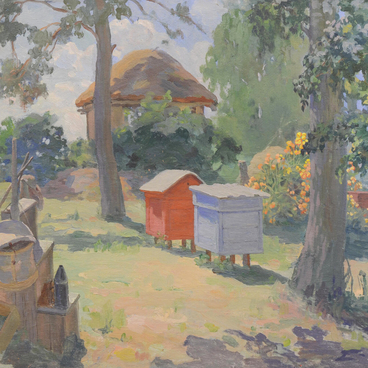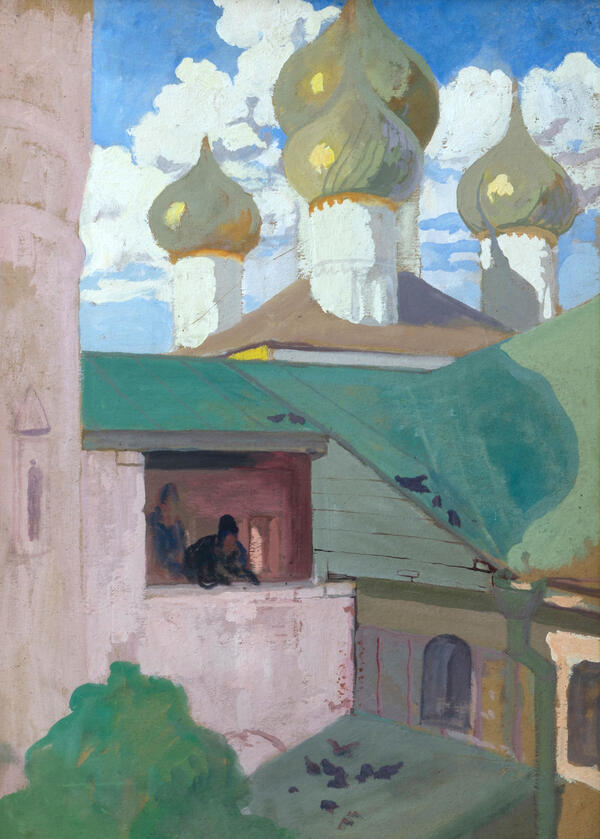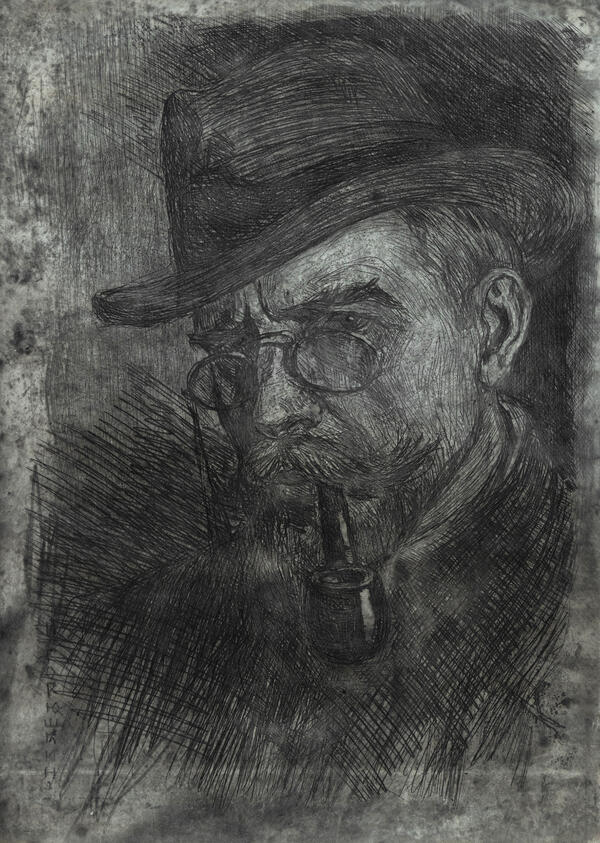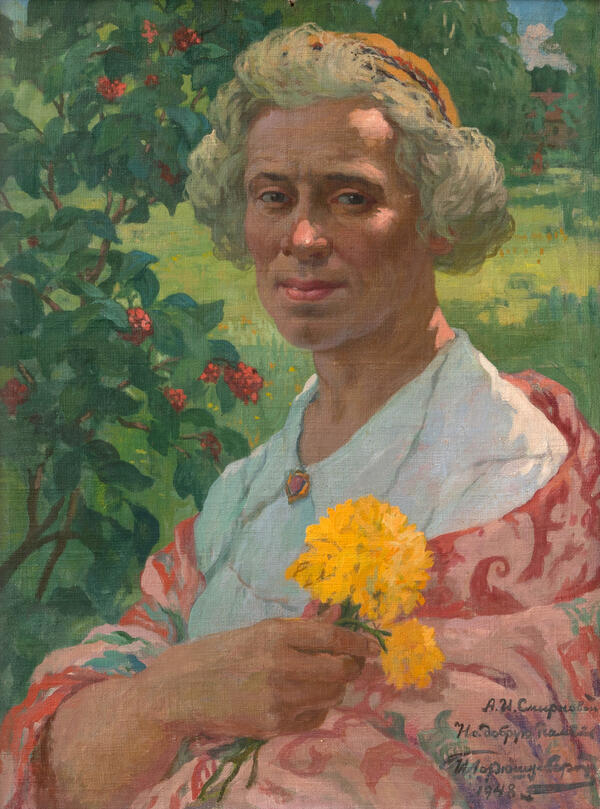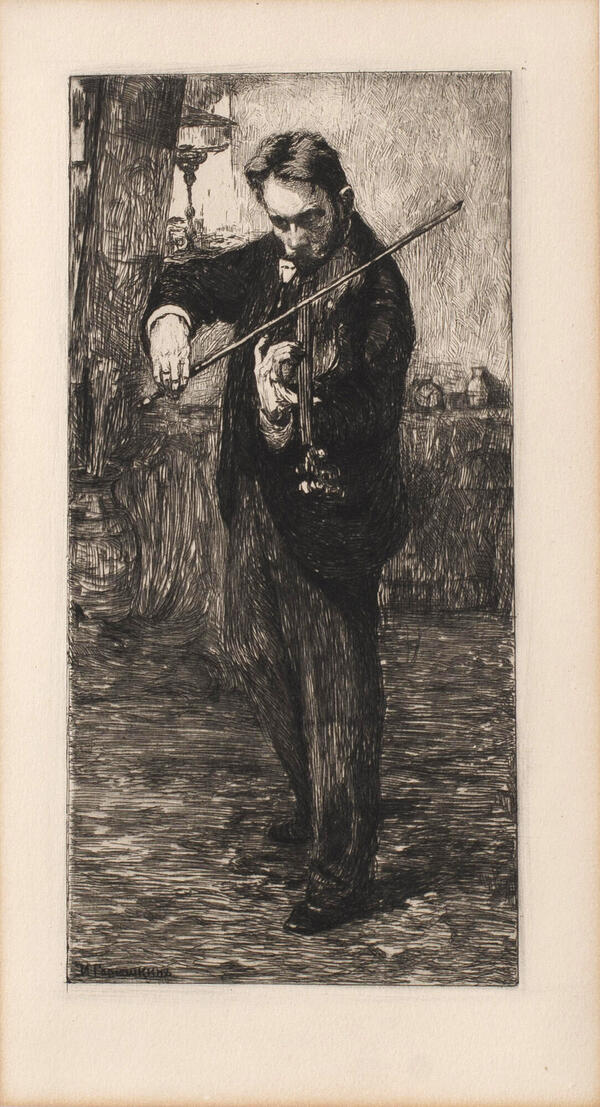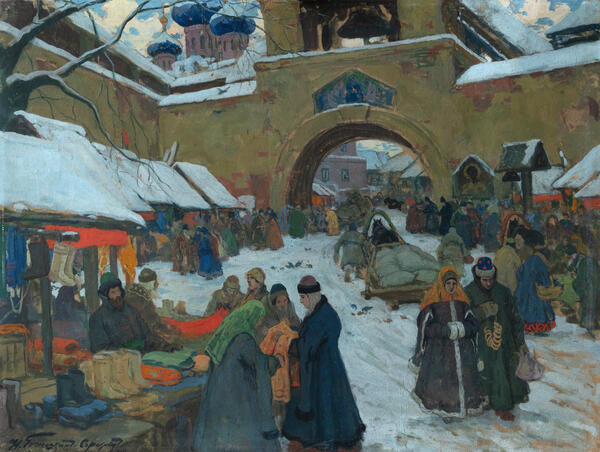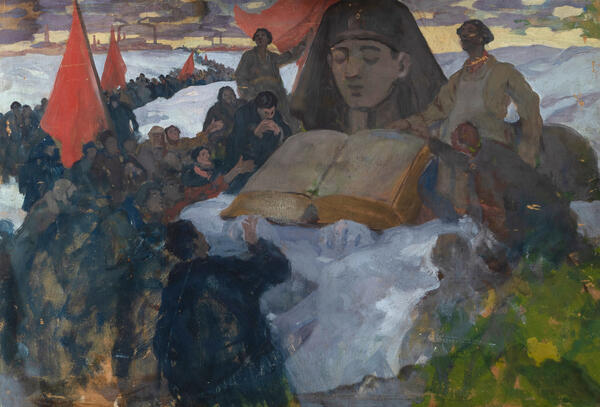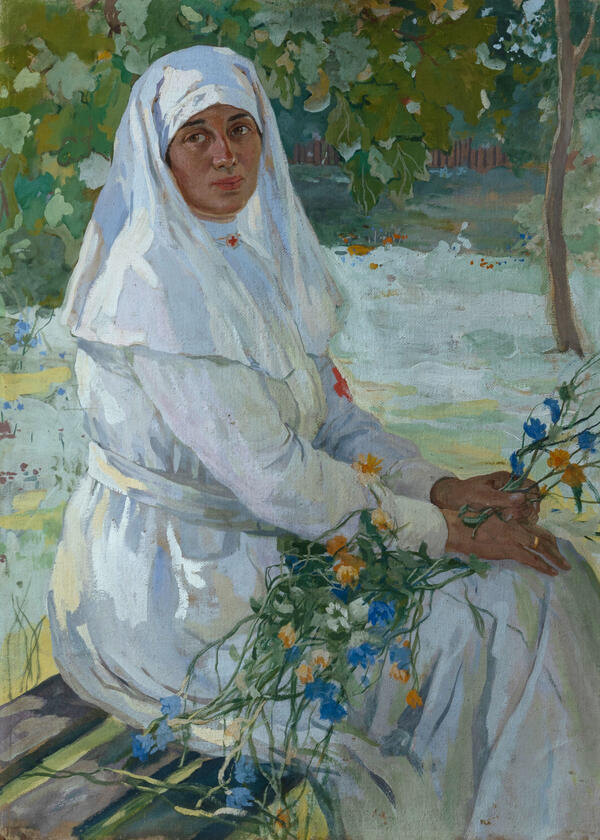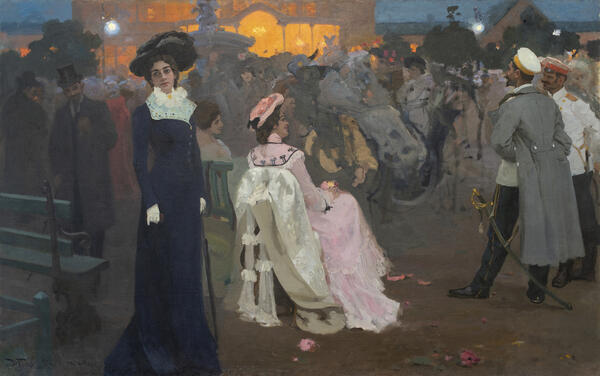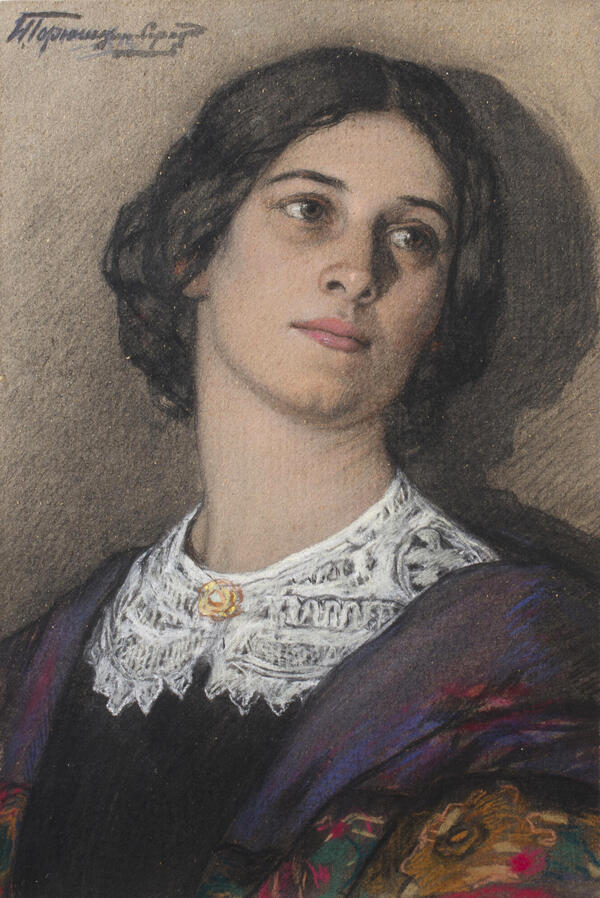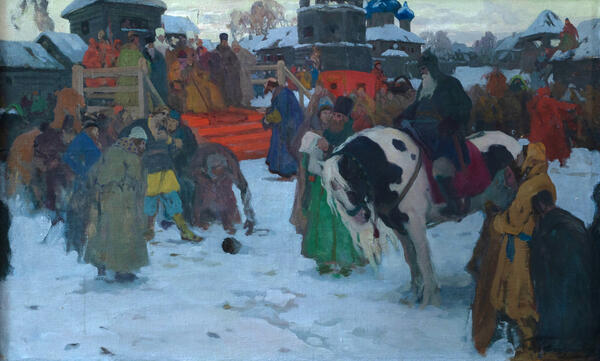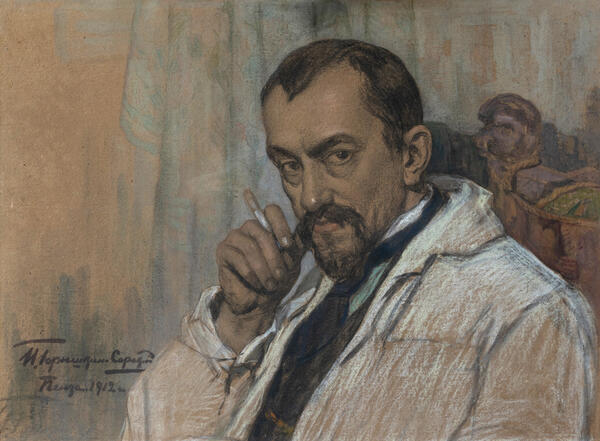Ivan Silych Goryushkin-Sorokopudov found inspiration in the medieval Russian culture. In his studio, he kept folk costumes, clerical clothing, and old weapons of warriors. He not only dressed his models in such clothes but often tried them on himself. Medieval Russia was reflected not only in his standalone paintings, but also in the illustrations for various literary works, such as “The Tale of Igor’s Campaign”.
This ancient Russian poem gives an account of the failed raid of the Russian princes against the Polovtsy in 1185. The campaign was led by Igor Svyatoslavich, Prince of Novgorod-Seversk. There have been many translations and poetic interpretations of this work. It influenced the work of famous writers such as Nikolay Vasilyevich Gogol, Alexander Alexandrovich Blok, and Sergei Alexandrovich Yesenin. It also inspired paintings by a number of artists, including Viktor Mikhailovich Vasnetsov and Vasily Grigoryevich Perov. One of the most prominent musical pieces based on this story is the opera “Prince Igor” by Alexander Porfiryevich Borodin.
The painting “Yaroslavna’s Lament” from the museum collection is an illustration to the old Russian poem. It is one of the earliest works by Ivan Goryushkin-Sorokopudov. In this etching, he skillfully captured the light and aerial environment, as well as the character’s inner state. The dynamic contours are combined with broad planes filled with deep shadows, making the image more picturesque.
The etching features a carefully composed and emotionally powerful composition. It depicts the emotional turmoil of Igor’s young wife. Her mourning for the loss of her husband and fellow warriors was shared by all Russian people. Yaroslavna is shown close-up, with her eyes closed and a handkerchief in her raised right hand.
The low horizon gives
the figure a sense of monumentality. The flock of black birds flying above the
domes contributes to the feeling of unease. Ivan Goryushkin-Sorokopudov also
worked on the detailed depiction of Yaroslavna’s clothing. She wears a
fur-trimmed brocade coat, an embroidered skull cap, a veil draped over her
shoulders, and long, heavy strings of beads.

